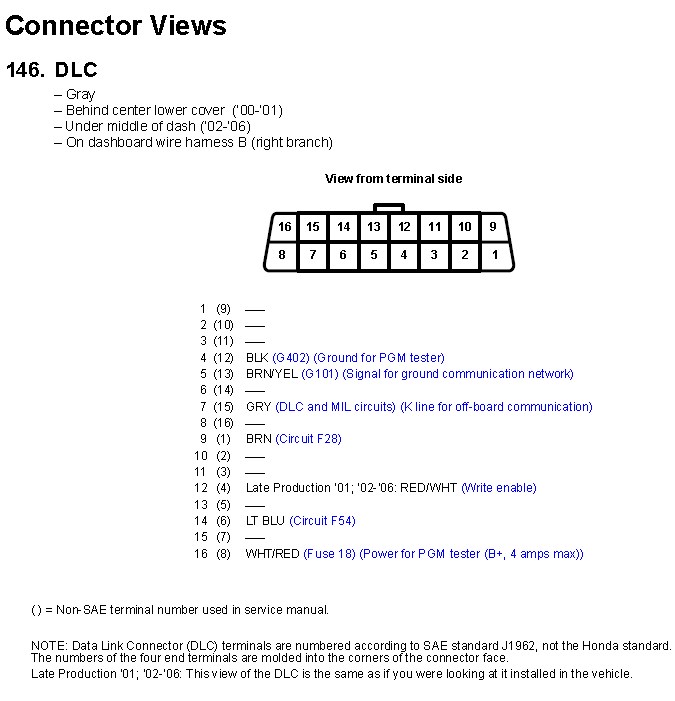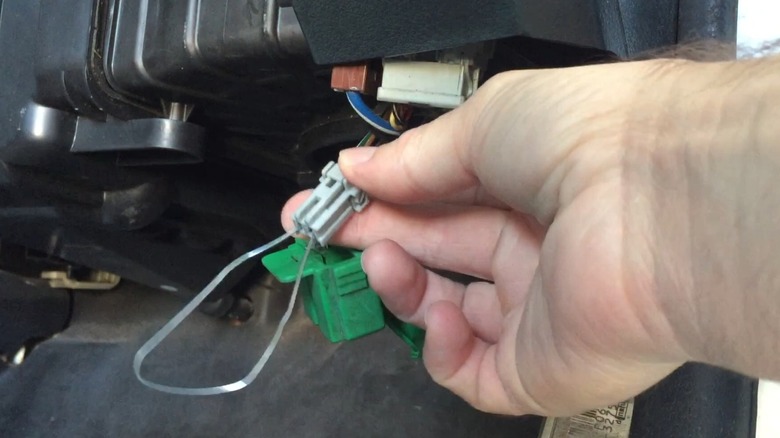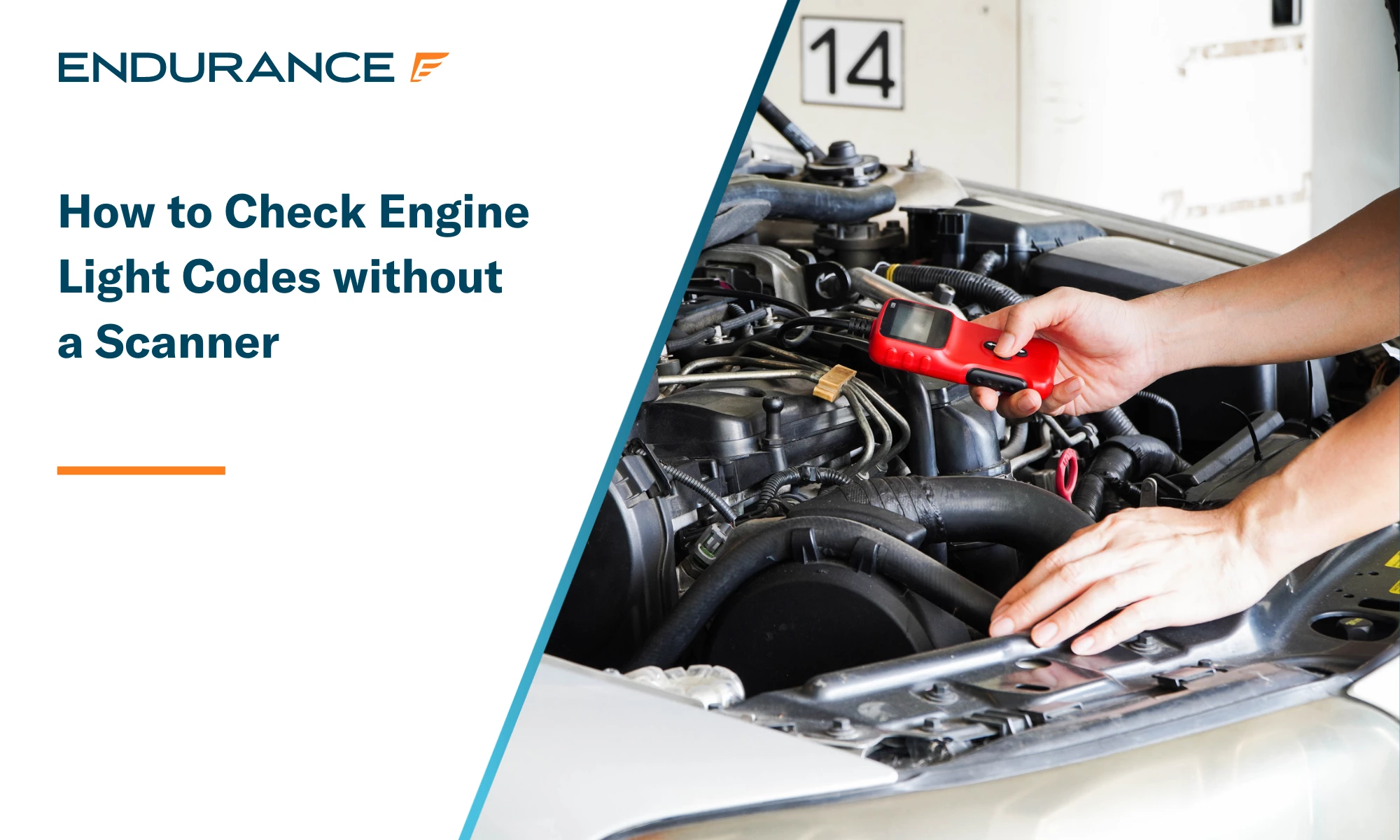You’re not alone if you’ve ever been puzzled by a mysterious warning light on your car’s dashboard. These lights are trying to tell you something, but without a scanner, deciphering their message can feel impossible.
Imagine knowing exactly what’s going on with your vehicle without the need for expensive tools or a trip to the mechanic. Yes, it’s possible to get OBD2 codes without a scanner! This guide is here to unlock that secret for you.
By the end of this article, you’ll discover a simple, cost-effective way to understand your car’s needs. Ready to take control and decode those signals? Let’s dive in and empower you with the knowledge your car is eager to share.

Credit: www.insightcentral.net
Basics Of Obd2 Codes
Understanding OBD2 codes can save you time and money. These codes help diagnose car problems. The OBD2 system monitors your vehicle’s health. When a problem occurs, it generates a code. This code points to the issue.
Each code is a combination of letters and numbers. The first letter indicates the system category. For example, ‘P’ stands for Powertrain, ‘B’ for Body, ‘C’ for Chassis, and ‘U’ for Network. The numbers provide specific details about the malfunction. Knowing these basics aids in understanding your car better.
Understanding The Obd2 Code Structure
The structure of an OBD2 code is simple. It consists of five characters. The first character is a letter. The next four are numbers. The first letter shows the system area. The first number indicates if the code is generic or manufacturer-specific. The last three numbers identify the specific issue.
Common Obd2 Code Categories
OBD2 codes fall into several categories. Powertrain codes relate to engine and transmission. Body codes involve comfort systems like airbags. Chassis codes cover suspension and brake systems. Network codes deal with onboard computer communication. Recognizing these categories helps in pinpointing problems.
Why Obd2 Codes Matter
OBD2 codes are vital for vehicle maintenance. They provide insights into vehicle issues. Mechanics use these codes for accurate diagnosis. Knowing these codes helps in troubleshooting. It ensures the right fix for the problem. It can also prevent bigger issues from developing.

Credit: www.slashgear.com
Common Reasons For Check Engine Light
The check engine light can be a source of stress for drivers. This little light is a signal that something is wrong with your vehicle. Understanding the common reasons for its illumination is crucial. It helps in identifying the problem without a scanner.
Sensor Malfunctions
Sensors are vital for your car’s performance. They monitor engine functions and emissions. A faulty sensor can trigger the check engine light. Oxygen sensors and mass airflow sensors are common culprits.
Loose Or Damaged Gas Cap
The gas cap might seem minor. Yet, a loose or damaged cap can cause issues. It leads to fuel vapor leaks, affecting engine performance. Tightening or replacing the cap can solve this problem.
Issues With Spark Plugs
Spark plugs ignite the fuel-air mixture in the engine. Worn or faulty plugs can cause misfires. This affects engine efficiency and triggers the check engine light.
Problems With The Catalytic Converter
The catalytic converter reduces harmful emissions. Its failure can lead to increased emissions. This issue often results in the check engine light coming on. Regular maintenance can prevent this.
Exhaust System Leaks
Exhaust leaks can lead to engine performance issues. They affect the car’s efficiency and emissions. Detecting and fixing leaks can turn off the light.
Manual Code Retrieval Methods
Unlocking the secrets of your car’s health can be daunting without a scanner. Fortunately, manual code retrieval methods offer a straightforward approach. These methods let you access diagnostic codes using simple techniques. No high-tech gadgets required. Just your trusty ignition key and dashboard.
Using The Ignition Key
The ignition key method is quite simple. Insert your key into the ignition. Turn it on and off rapidly. Repeat the process three times. Keep the key in the “on” position after the third cycle. Look at your dashboard. Check for blinking lights or symbols. These indicate potential issues. Count the blinks carefully. They represent a specific code. Use a guide to translate these blinks into readable codes.
Dashboard Light Sequence Method
The dashboard light sequence method is another handy tool. Turn the ignition key to the “on” position. Do not start the engine. Observe your dashboard lights closely. Watch for a series of blinks or flashes. Each sequence holds a unique meaning. Count the blinks and pauses. Write them down for reference. Decode these sequences using a manual or online guide. It helps in understanding your car’s problems better.
Smartphone Apps For Code Reading
Smartphone apps offer a convenient way to read OBD2 codes. They eliminate the need for a separate scanner. Many apps provide real-time data and diagnostic information. These apps are easy to use and often affordable. With them, you can quickly identify issues in your vehicle. This approach suits tech-savvy users and is growing in popularity.
Top App Recommendations
Many apps are available for reading OBD2 codes. Torque Pro is a popular choice. It offers comprehensive diagnostics and real-time monitoring. OBDeleven is another top app. It’s known for its user-friendly interface. Car Scanner ELM OBD2 provides detailed information and supports multiple vehicle models. DashCommand is favored for its customizable dashboard. Each app has unique features and compatibility.
Connecting Your Smartphone
Connecting your smartphone to your car is simple. First, ensure your car has a compatible OBD2 port. Most vehicles manufactured after 1996 have this port. Then, purchase a compatible Bluetooth or Wi-Fi OBD2 adapter. Plug the adapter into your car’s OBD2 port. Next, download your chosen app from the app store. Open the app and pair it with the adapter. Follow on-screen instructions for a seamless connection.
Once connected, you can start reading codes. The app will display diagnostic information. You’ll see error codes and system status. This helps in identifying issues quickly. Many apps offer tips for fixing common problems. This makes it easier to maintain your vehicle.
Using A Paperclip Or Wire Jumper
Discovering vehicle issues without a scanner can be daunting. But you can use a paperclip or wire jumper to check OBD2 codes. This method is simple and cost-effective. It allows you to diagnose basic problems without professional help. Understanding how to use a paperclip or wire jumper can save time and money. It’s a straightforward technique that many car enthusiasts use.
Step-by-step Guide
First, locate the OBD2 port in your vehicle. It’s usually near the driver’s seat. Insert the paperclip into the port’s specific pins. These pins correspond to ground and signal. Turn the ignition on, but don’t start the engine. Watch the dashboard lights. They will blink in a specific pattern. Count the blinks carefully. Each pattern represents a different code. These codes help identify potential issues.
Safety Precautions
Always take safety seriously. Ensure the vehicle is off before starting. Use insulated gloves if possible. Avoid touching other metal parts. This prevents electrical shock. Check the paperclip for damage. A damaged paperclip can cause issues. Keep children away during this process. They might inadvertently harm themselves. Work in a well-lit area. Proper lighting helps avoid mistakes.

Credit: www.endurancewarranty.com
Interpreting The Codes
Discover how to retrieve OBD2 codes without a scanner using simple methods. By turning the ignition key in a specific sequence, your car’s dashboard will reveal these codes. This technique helps in understanding your vehicle’s issues without needing advanced tools.
Interpreting the codes from your car’s onboard diagnostics system can feel like cracking a secret code. Yet, understanding these codes is crucial for diagnosing potential issues. Armed with the right knowledge, you can save time and money by addressing problems before they escalate.Understanding Code Formats
OBD2 codes are presented in a specific format. They typically begin with a letter followed by four numbers. The letter indicates the type of system experiencing the issue. For example, “P” stands for Powertrain, “B” for Body, and “C” for Chassis. The first number after the letter tells you if it’s a generic code (0) or manufacturer-specific (1). The remaining numbers provide specific details about the problem. Familiarize yourself with this format to quickly identify the type of issue your car is facing.Common Codes And Their Meanings
Some OBD2 codes appear more frequently than others. Knowing these can help you better understand what’s going on under the hood. For instance, code P0171 indicates that the engine is running too lean, meaning there’s too much air and not enough fuel. On the other hand, P0300 alerts you to random or multiple cylinder misfires, often caused by faulty spark plugs or ignition coils. You might wonder, how do these codes help you in practice? If your engine light comes on, and you retrieve a P0420 code, it suggests a catalytic converter issue. This information can guide you to check the exhaust system before considering expensive repairs. Understanding these common codes empowers you to make informed decisions. It turns a potentially daunting task into an opportunity for proactive car maintenance. How much time and stress could you save by catching these issues early?Diy Solutions For Code Issues
Finding OBD2 codes without a scanner involves using the car’s dashboard. Turn the ignition key to the “on” position without starting the engine. The check engine light may flash, revealing error codes in a sequence. Refer to your vehicle’s manual to interpret these codes accurately.
Have you ever found yourself staring at that mysterious check engine light, wishing you could decode the issue without spending a fortune on fancy equipment? You’re not alone. Many car enthusiasts and DIYers are eager to tackle these code issues head-on using simple methods. These solutions can save you time and money, while also giving you a sense of accomplishment. Let’s dive into some practical ways you can address these problems without needing an OBD2 scanner.Basic Fixes For Common Problems
Sometimes, the simplest action can solve what seems like a complex problem. Start by checking your gas cap. A loose or damaged gas cap can trigger the check engine light. A friend once spent hours worrying about a possible engine issue, only to find out that tightening the gas cap was all it took to turn off the light. You might be surprised how often this happens. Ensure your gas cap is secure and in good condition. Another quick fix is examining your air filter. A clogged air filter can lead to poor engine performance and trigger fault codes. Cleaning or replacing it can make a significant difference. Don’t underestimate these basic solutions—they might be all you need.When To Seek Professional Help
DIY methods can be empowering, but they have their limits. If you’ve tried the basics and the problem persists, it might be time to call in a pro. You don’t want a minor issue to snowball into something bigger. It’s better to be safe than sorry. Consider the complexity of the problem. If you’re dealing with intricate electrical issues or persistent codes that don’t respond to DIY solutions, a professional can offer expertise and diagnostic tools that you simply can’t replicate at home. So, when should you seek help? Ask yourself: “Is this beyond my skill level?” If the answer is yes, reaching out to a professional might be the best course of action. Remember, knowing when to let go and ask for help isn’t a sign of defeat; it’s smart and ensures your car remains in top shape. So, are you ready to tackle those pesky codes, or is it time to call in the experts?Preventive Maintenance Tips
Checking for OBD2 codes without a scanner is simple. Turn the ignition key on and off twice, then leave it on. Watch for flashing lights on the dashboard. Each flash represents a digit in the code. Write it down and check online for its meaning.
When it comes to maintaining your vehicle, preventive maintenance is your best friend. It can save you time, stress, and money by helping you avoid unexpected breakdowns. Whether you’re a seasoned driver or new to car care, following a few essential tips can make a world of difference in keeping your vehicle running smoothly.Regular Vehicle Checkups
Scheduling regular checkups for your vehicle is crucial. Think of it as a health check for your car. These checkups can help you catch minor issues before they become major problems. Start by checking the oil level and quality every month. You can do this at home with a simple dipstick test. If the oil looks dirty, it might be time for a change. Tire pressure is another key aspect to monitor. Under-inflated tires can lead to poor fuel efficiency and increased wear. Use a tire gauge to ensure they’re at the recommended pressure. If you’re unsure about anything, consult your car’s manual. It’s a goldmine of information tailored specifically to your vehicle.Monitoring Performance Indicators
Your car is constantly communicating with you through various indicators. Paying attention to these can prevent surprises on the road. Listen to any unusual sounds. A strange noise can be the first sign of a problem. A squealing sound when braking may indicate worn-out brake pads that need immediate attention. Watch out for dashboard warning lights. These are your car’s way of saying something needs checking. If a light pops up and you don’t have a scanner, refer to your manual to understand the issue. Don’t ignore changes in driving performance. If the car feels sluggish or less responsive, it might be time to investigate further. Have you ever noticed how your car’s behavior changes with the seasons? Cold weather can affect battery performance, while summer heat might impact cooling systems. Keeping an eye on these indicators helps you stay ahead of potential issues. By integrating these preventive maintenance tips into your routine, you’re not just maintaining your vehicle; you’re ensuring your safety and peace of mind on the road. What steps will you take today to better monitor your car’s health?Conclusion
Learning to get OBD2 codes without a scanner can save time. It’s a valuable skill for any car owner. You can address car issues without a mechanic. Understanding these codes offers peace of mind. It helps in basic car maintenance.
Use the car’s manual for guidance. Practice reading codes with your car. Stay informed about your vehicle’s health. This knowledge empowers you on the road. No scanner? No problem. Just follow these simple steps. You’ll be well-prepared for minor car issues.
Happy driving!
